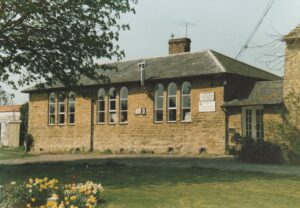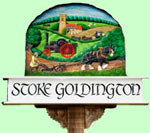Until the 1880s there was no Government Department responsible for Education in England and the poor received very little instruction, other than the skills needed to support their families.
On March 13 1837 a meeting took place of ‘The Friends of Education‘ in Stoke at which members of the Church of England were present, when it was agreed that “a school should be established”.
Rev. Fiennes Trotman made an application to the National Society in 1838 for aid towards building a schoolroom to accommodate 144 children, allowing six square feet per child as per the Society’s requirements.
Previously the lace trade had supported the population quite well but, since greater mechanisation, that trade had failed and the Parish was entirely agricultural and very poor.
The Rector and some friends had raised a considerable sum towards the cost of the project but no further help could be expected from the villagers.
The Society granted £60, and was successful in obtaining a further sum of £72 from the Treasury towards the undertaking.
Because of difficulty in obtaining a suitable site, building work did not start until 1st October 1838 but the school had commenced in the autumn of 1837 in a temporary room, about a quarter of a mile away.
This meant that the church school in Stoke Goldington began in the same year as the British School read more…
The new school room, which the Rector described as “imposing, and an ornament to the village”, was opened at the beginning of 1839 and licensed for a Chapel.

Stoke Goldington C E Primary School
The building was begun in 1837, and extended in 1870 and then again in 1891/2 by Edward Swinfen Harris (an eminent architect from Stony Stratford).
Unusually, the school is not situated near either the church or the Rectory
On 16 June 1845, the rival British School closed and the children were then received at the Church National School, by permission of the Rector, Rev. Fiennes Trotman
The SGA holds many School documents in the Archive more…
